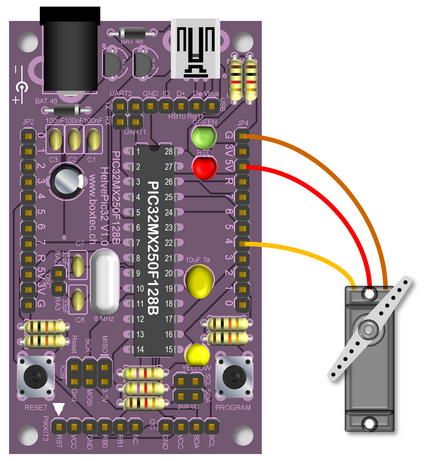Servo
Spätestens jetzt ist es an der Zeit etwas Bewegung an das Board zu bringen: Der Anschluss eines Servos. Dazu bietet es sich an, gleich die SoftPWMServo Bibliothek zu verwenden. Damit ist es möglich, jeden IO Pin zur Steuerung des Servos zu verwenden.
Der zugehörige Code ist entsprechend einfach:
const uint8_t LEFT=0; const uint8_t RIGHT=1; uint8_t nP[2][8] = {{0,17, 9,10,11,12,13,14 },{18,17, 1, 2, 3, 6, 7, 8 }}; // pins of version 1.0 using DP32 board definitions #include <SoftPWMServo.h> int pos = 0; // variable to store the servo position, in microseconds const int pin = nP[RIGHT][3]; // Choose _any_ pin number on your board, i.e. pin 3, right side void setup() { } void loop() { for(pos = 1000; pos < 2000; pos += 10) // goes from 1ms to 2ms { // in steps of 10us SoftPWMServoServoWrite(pin, pos); // tell servo to go to position in variable 'pos' delay(25); // waits 25ms for the servo to reach the position } }
Auffällig ist, wie glatt und fließend der Servo sich bewegt.
